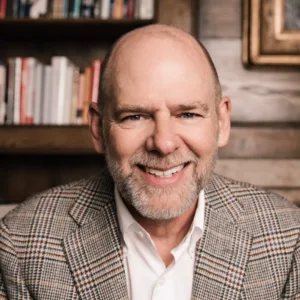- Culture
- August 18, 2023
- Mark Miller
Investing in People
In challenging economic times, one of the easiest items to cut from the budget is learning and development. The rationale is understandable. Rarely will any organization see immediate negative consequences when training is discontinued. It looks like found money in the budgeting process. Unfortunately, this logic is flawed. Learning and…

In challenging economic times, one of the easiest items to cut from the budget is learning and development. The rationale is understandable. Rarely will any organization see immediate negative consequences when training is discontinued. It looks like found money in the budgeting process.
Unfortunately, this logic is flawed. Learning and development is like time-released medication: the benefits are derived over time.
Imagine someone who believes they don’t need to save for retirement. This month, even this year, they see no ill effects from their decision. However, if you play the movie forward, many of these same people live their final years in poverty. The decision not to save was painless in the moment, but the pain arrives later.
I frequently get asked: “Why should we invest in learning and development for our staff?” There are many reasons. Here are some of mine…
- Improve performance – Learning and development may not have immediate impact on the Profit and Loss statement, but it better have long-term impact. We help people grow so we can help the business grow.
- Ensure an adequate supply of prepared leadership for the future – We’re trying to build a leadership pipeline. This will not happen without thoughtful design and construction. Pipelines don’t build themselves.
- Increase individual and organizational capacity – Growth should generate capacity. Every organization I know of is asking their people to do more with less. Without new thinking and methods, this mandate is a prescription for disaster.
- Establish common language and models – When people align their thinking, it’s much easier to align their actions. My favorite example of this is around the topic of leadership. Does your organization have a common definition of leadership? If not, you’ll always struggle to create a leadership culture.
- Build cultural cohesiveness – Shared learning experiences create common bonds and help teams grow. Doing life together, including learning, fosters a unified culture.
- Help staff increase their level of contribution – If you’ve created a healthy organization, people want to contribute at a higher level. People want to add more value. Learning and development facilitates this.
- Introduce new best practices – Left on their own, organizations can easily become insulated from the outside world. They settle into patterns of behavior that often do not represent global best practices. Investments in learning and development can mitigate this tendency.
- Combat complacency and stagnation – Living things grow. Growth creates energy and movement. Investments in learning and development are like water on a plant. Without it, growth is stunted and death is not far behind.
- Maintain people as a competitive advantage – Are your people a competitive advantage for your organization? If so, an on-going investment will be required to maintain that edge. If they’re not, you’ll never enjoy that advantage without investing in them.
For me, there’s one more reason to invest in learning and development. I don’t see our people as an asset… I see them as a gift. I want to steward that gift well.
Why do you invest in your people?
Comments on Investing in People

Mark Miller
Mark Miller is a Wall Street Journal and international best-selling author, communicator, and the former Vice President of High Performance Leadership at Chick-fil-A. Mark’s leadership journey at Chick-fil-A spanned 45 years, and today, he serves as the Co-Founder of Lead Every Day. Mark began writing almost twenty years ago, and with over one million books in print in more than twenty-five languages, his global impact continues to grow.